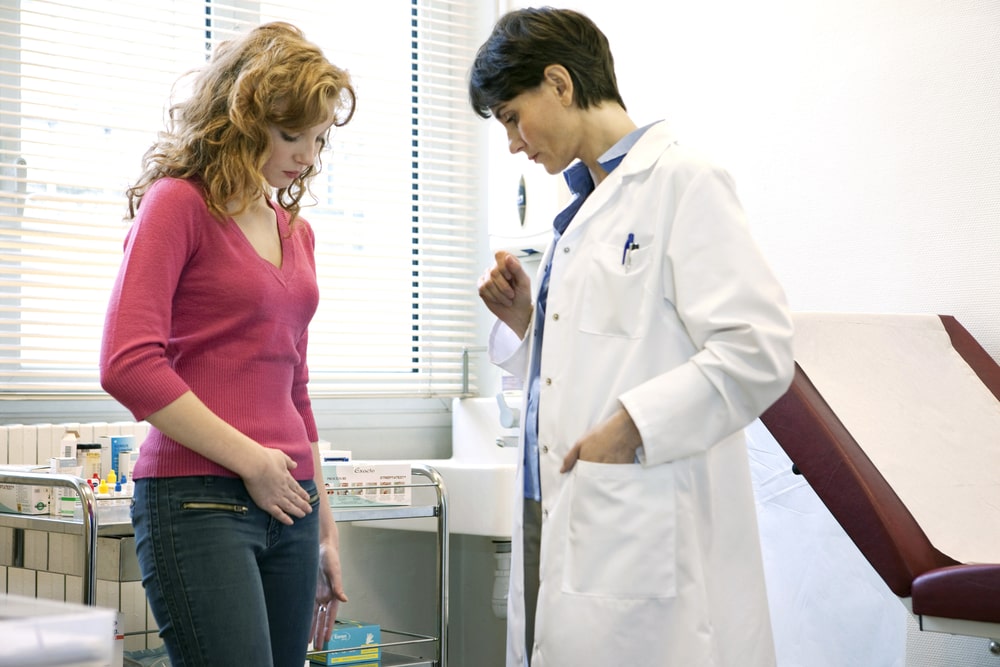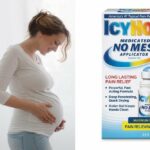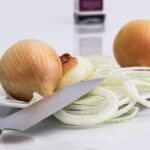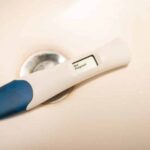Having a C-section can take a huge toll on both your body and your mental health. Recovery can be tricky especially when you are juggling a new baby and trying to care for your healing scar.
This can be made ten times more difficult when you have a reoccurring yeast infection and whether you have a skin or vaginal yeast infection, they can be painful, wearing, and a right pain to get rid of.
Firstly, don’t worry you are not the only one and there are plenty of women who face the same problem. It can also happen with all different kinds of surgeries, it does not exclusively happen after a C-section.
But do not dismay, there are plenty of ways to treat the infection and also preventative care to stop it from returning again and again.
How Does a Yeast Infection After A C-Section Occur?
You may be wondering where on earth this infection has come from as your baby has just been pulled straight from your uterus.
But this is mainly due to the broad-spectrum antibiotics that most women receive during cesarean delivery to ward off infection.
Antibiotics that are used to fight off infection can also kill off the healthy bacteria that keep the yeast in check. Less good bacteria = more yeast and this can mean a vaginal yeast infection. Broad-spectrum antibiotics can be a common cause of yeast infections.
What If I Get A Post C-Section Yeast Infection?
As we have said it is quite common to get a yeast infection after surgery especially when you have been given broad-spectrum antibiotics. Here are some of the signs to look out for and also some ways to prevent yeast infection.
Signs Of Vaginal Yeast Infection
The signs of a vaginal yeast infection are slightly different and may be easier to spot. Here are the signs to keep an eye out for:
- Itching and irritation
- A burning feeling
- Redness
- Swelling
- Pain or soreness
- Vaginal discharge
- Thick white or even yellow vaginal discharge
View in gallery
Signs Of Incision Yeast Infection
The normal signs that you would be looking out for such as warm and red are already present on your scar as part of the healing process. But here are a few other signs of a yeast infection that you can keep an eye out for:
- Itching, red skin
- An odor coming from the incision
- Skin lesions
- Swelling
- Red, scaly or bumpy skin
- Beef like redness
- Any other changes in the skin color
Prevention Of A Yeast Infection After C-Section
Most women would rather prevent a yeast infection than have to deal with trying to get rid of it, especially while trying to look after a newborn and recover from major surgery.
Yeast infections usually happen in warm, moist areas of skin, so the best way to try to prevent them is to try to remove the conditions that it likes.
This is either by reducing the temperature which in this case is not really something that can be accomplished, or the moisture which can be removed or at least lessened.
Air drying
The area must be completely dry especially after having a shower. Ideally, it should be left to air dry but as a busy new mom, this is rarely going to be possible.
So it is advised that after your shower you pat the area dry, then leave to air dry. If this is not possible, then you can use a hairdryer on a cool setting to ensure that skin is really dry.
Use a moisture absorbing material
After giving birth and especially after C-section, many women have a fold of skin that goes over their incision. This is going to mean that the area is prone to moisture and also being very warm – the perfect breeding grounds for a yeast infection.
To try to eliminate the moisture here you could try placing pieces of gauze in between the fold of skin. This will soak up any moisture and help to keep the area relatively dry.
[amalinkspro type=”showcase” asin=”B00LITWW0S” apilink=”https://www.amazon.com/dp/B00LITWW0S?tag=mominformedcom-20&linkCode=osi&th=1&psc=1″ new-window=”true” addtocart=”false” nofollow=”true” sc-id=”4″ imgs=”LargeImage” link-imgs=”false” specs=”50-count package of Band-Aid Brand of First Aid Products Tru-Absorb Sterile Gauze Sponges for cleaning and applying medication to wounds~~~These first aid supplies feature a special low-linting design which helps provide cleaner wounds and may help prevent irritation~~~Each large gauze sponge measures 4 inches by 4 inches in size, making them the ideal first aid coverings for minor cuts, scrapes, and burns” btn-color=”#ff9900″ btn-text=”Buy on Amazon” alignment=”aligncenter” hide-prime=”0″ hide-image=”0″ hide-price=”0″ hide-button=”0″ width=”750″]Band Aid Brand First Aid Products Tru-Absorb Gauze Sponges for Cleaning Wounds[/amalinkspro]
You will need to change this dressing often to ensure it stays dry meaning that you will need a good supply of gauze.
Change underwear often
The key to success is keeping the area dry and this may mean changing your underwear frequently throughout the day. If you are changing your gauze because it is damp then you can be sure that your underwear is to and will also need to be changed.
Reduce Friction
Your scar is in an area where you may find that the elastic from underwear is rubbing on it. You want to try to avoid this kind of friction and this can be achieved by wearing loose-fitting clothes and avoiding underwear that sits right on your incision.
How To Treat a Yeast Infection
In most cases of a yeast infection, your doctor will prescribe an over-the-counter medication. He may also prescribe an antifungal powder to help keep the area dry.
If you want to go ahead and try some other remedies then there is no reason that you can’t as long as you are very careful not to use anything that will irritate your scar or surrounding skin.
There are some great natural remedies suggested to ease and cure a yeast infection, some are things that you should already be doing as part of your recovery process but others are a little less conventional.
Take Care Of Your Incision
If the yeast infection is around your incision, there are a few things that you need to do. to be honest you are probably doing most if not all of them but here is a quick run through just in case.
- Make sure that you take a shower daily, let the soap run over your incision but do not under any circumstances scrub it.
- Make sure that the area is completely dry after taking a shower and remains dry throughout the day.
- Apply your over the counter cream as often as instructed.
- Use an antifungal powder to keep the area dry too.
- Try to let it get as much air as possible.
Try An Over-The-Counter Spray
If you are not prescribed a spray powder by your doctor you can purchase one over the counter at the local store.
A good option may be a spray such as Lotrimin that can be sprayed over the top of your incision, it will help to lessen the weeping, allowing your incision to heal easier and it can be applied up to 3 times a day.
[amalinkspro type=”showcase” asin=”B073HDYWQY” apilink=”https://www.amazon.com/dp/B073HDYWQY?tag=mominformedcom-20&linkCode=osi&th=1&psc=1″ new-window=”true” addtocart=”false” nofollow=”true” sc-id=”4″ imgs=”LargeImage” link-imgs=”false” specs=”Soothe itchy, cracked feet and toes with this odorless, greaseless, and non-staining formula thats easy to apply topically to affected skin.~~~Sport Aid offers a wide range of quality products designed to help you stay active.~~~Helps prevent from jock itch, and ringworm.” btn-color=”#ff9900″ btn-text=”Buy on Amazon” alignment=”aligncenter” hide-prime=”0″ hide-image=”0″ hide-price=”0″ hide-button=”0″ width=”750″]Lotrimin AF Antifungal Cream – 1.05 oz[/amalinkspro]
Eat Lots Of Yogurts
Eating foods such as yogurt that contains lactobacillus introduces good bacteria in your diet. Lactobacillus releases hydrogen peroxide, which kills Candida, thus combating the infection.
If you have a scheduled C-section you could start to gradually increase the amount of these foods a few weeks before your scheduled surgery and also for a few weeks after. Applying cold yogurt can also soothe the itching and burning sensations.
You must use plain, natural yogurt and it is important that it contains no natural sweeteners.
Change Your Sanitary Wear Often
Although you have had a C-section you will still have vaginal bleeding. By keeping those pads on for too long will create moisture in and around your vagina. This area really needs to be kept as clean and dry as possible throughout the healing process.
The same rules should apply to any gauze that you have covering your incision. Once it is damp it needs to be changed in order to prevent the yeast infection from getting any worse.
Probiotics
Taking probiotics can help to put the healthy bacteria back in your GI tract, which will help to fight the overgrowth of Candida in your system.
Vitamin C
The prenatal vitamin should contain vitamin C and you should continue to take this even after you have given birth. But if you want to top this vitamin C dose up then you can always an extra supplement and give yourself a little boost.
Vitamin C is a great way to boost your immune system and fight back the Candida that causes yeast infection helping you to get back to a more balanced system.
The Final Thought
Recovering from birth can be a tough process let alone from major surgery. On top of recovering, you are also looking after a newborn and the last thing that you need is to be dealing with a nasty yeast infection.
But there are ways to try to prevent the infection as we have discussed above and there are treatments that are almost always successful in the treatment of this infection.






